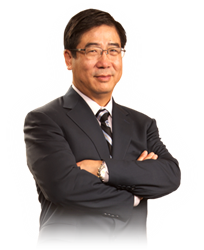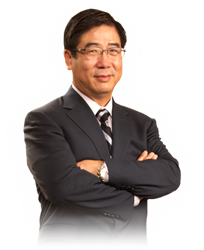
Dr. Kaixuan Liu
Called anterior cervical discectomy and fusion, the surgery that can repair this damage involves cutting out the disc from the front (anterior) part of the neck. The emptied disc space is then filled with a bone graft, bridging the two surrounding vertebrae to create a spinal fusion.
WEST ORANGE, N.J. (PRWEB)
March 06, 2020
Millions of people experience neck and arm pain stemming from problems with vertebral discs running down the neck, also known as the cervical spine. But when conservative treatments don’t ease the pain, surgery known as anterior cervical discectomy and fusion may spell relief, according to Kaixuan Liu, MD, PhD, founder and Medical Director of Atlantic Spine Center.
Among the top causes of neck pain are herniated or ruptured cervical discs, which can happen due to aging, wear-and-tear, or sudden trauma such as an accident, Dr. Liu says. When discs deteriorate significantly, the gel-filled center can escape from the hard outer shell, compressing nearby nerve roots and triggering pain, numbness and weakness.
Called anterior cervical discectomy and fusion, the surgery that can repair this damage involves cutting out the disc from the front (anterior) part of the neck. The emptied disc space is then filled with a bone graft, bridging the two surrounding vertebrae to create a spinal fusion.
“You might be a good candidate for anterior cervical discectomy if diagnostic imaging shows you have a herniated or degenerative disc that causes marked weakness in your arm or hand, and arm pain that’s even worse than your neck pain,” explains Dr. Liu, who is fellowship-trained in minimally invasive spine surgery.
What happens during anterior cervical discectomy and fusion?
Surgery is typically reserved only for those whose neck pain and other symptoms haven’t improved with medication, exercise, injections or physical therapy. “About 90% of patients with these symptoms will get better with conservative treatments within 6 weeks, but this surgery is a solid option for those who don’t,” Dr. Liu says.
What’s involved in this procedure?
- Through a small incision at the front of the neck, the surgeon moves aside neck muscles and the airway, exposing the patient’s disc and vertebrae.
- Using a special X-ray, the surgeon locates the affected vertebra and disc(s).
- One or more discs are removed with surgical tools, depending on the extent of a patient’s condition. A retractor is used to spread apart vertebrae surrounding the damaged disc.
- Any bone spurs pressing on nerve roots surrounding the damaged disc are removed.
- Bone graft material is inserted into the now-empty disc space. Derived from the patient, a cadaver or a man-made product, the bone graft may be fixed in place with metal plates and screws.
- The incision is closed and the patient is placed in a post-operative recovery area.
A major benefit of performing the surgery through the front of the neck is the ability to reach the affected disc(s) without disturbing the spinal cord, nerves or neck muscles, Dr. Liu notes. Also, most patients undergoing anterior cervical discectomy and fusion are able to go home the same day as the procedure, he says.
What’s recovery like?
Since it’s the most common surgical procedure used to treat damaged discs in the neck, anterior cervical discectomy has become increasingly advanced in recent years, helping reduce post-operative pain and speed patients’ recovery, Dr. Liu says.
While full recovery may take 4 to 6 weeks, patients are made comfortable right after surgery with medication. Some patients experience a sore throat, hoarseness or trouble swallowing, which should also resolve within days to weeks. A few restrictions are put in place at first, such as avoiding sitting for long periods, bending your head forward or backward, or lifting items heavier than 5 pounds, Dr. Liu explains.
A cervical collar or brace is sometimes worn to provide the patient with neck support and limit motion as the bone graft fuses. Additionally, your doctor may prescribe physical therapy and exercises to pave the way for better range of motion in your neck, once healed.
“For the vast majority of patients who undergo anterior cervical discectomy and fusion, the surgery is successful in finally relieving their neck and arm pain,” Dr. Liu says. “Patients can improve the odds of lasting results by practicing proper lifting techniques, keeping good posture, exercising appropriately, and controlling their weight. This procedure offers hope to those living with chronic pain, numbness or other symptoms that take away from their quality of life.”
Atlantic Spine Center is a nationally recognized leader for endoscopic spine surgery with several locations in NJ and NYC. http://www.atlanticspinecenter.com, http://www.atlanticspinecenter.nyc
Kaixuan Liu, MD, is a board-certified physician, fellowship-trained in minimally invasive spine surgery at Atlantic Spine Center.
Share article on social media or email:

